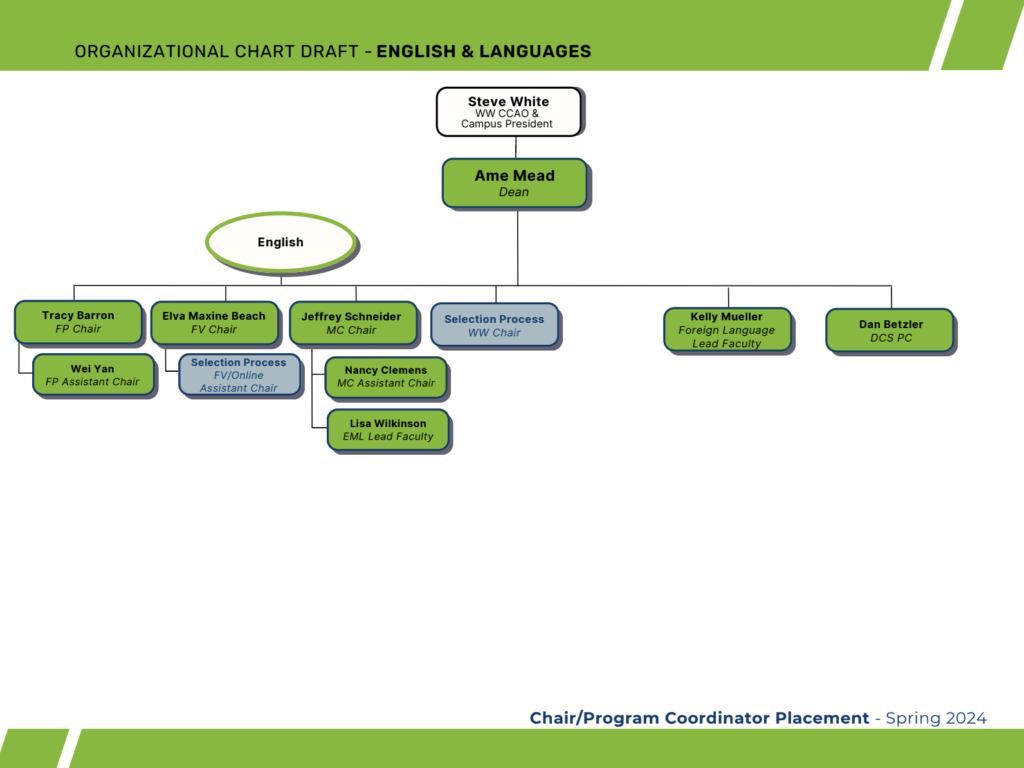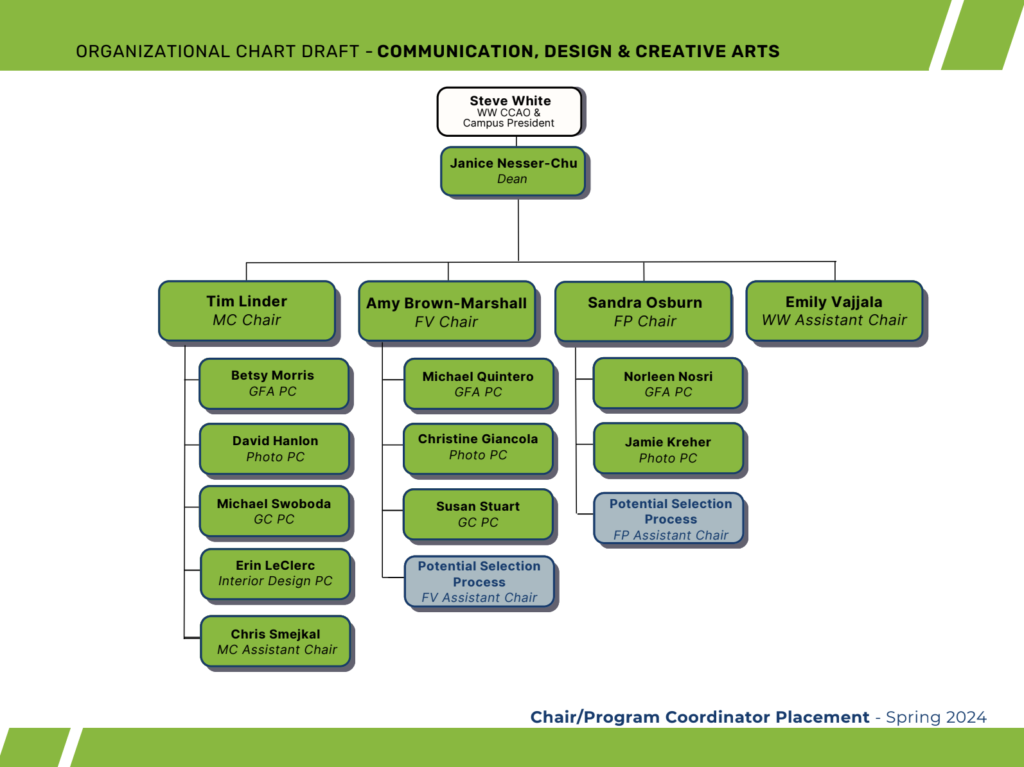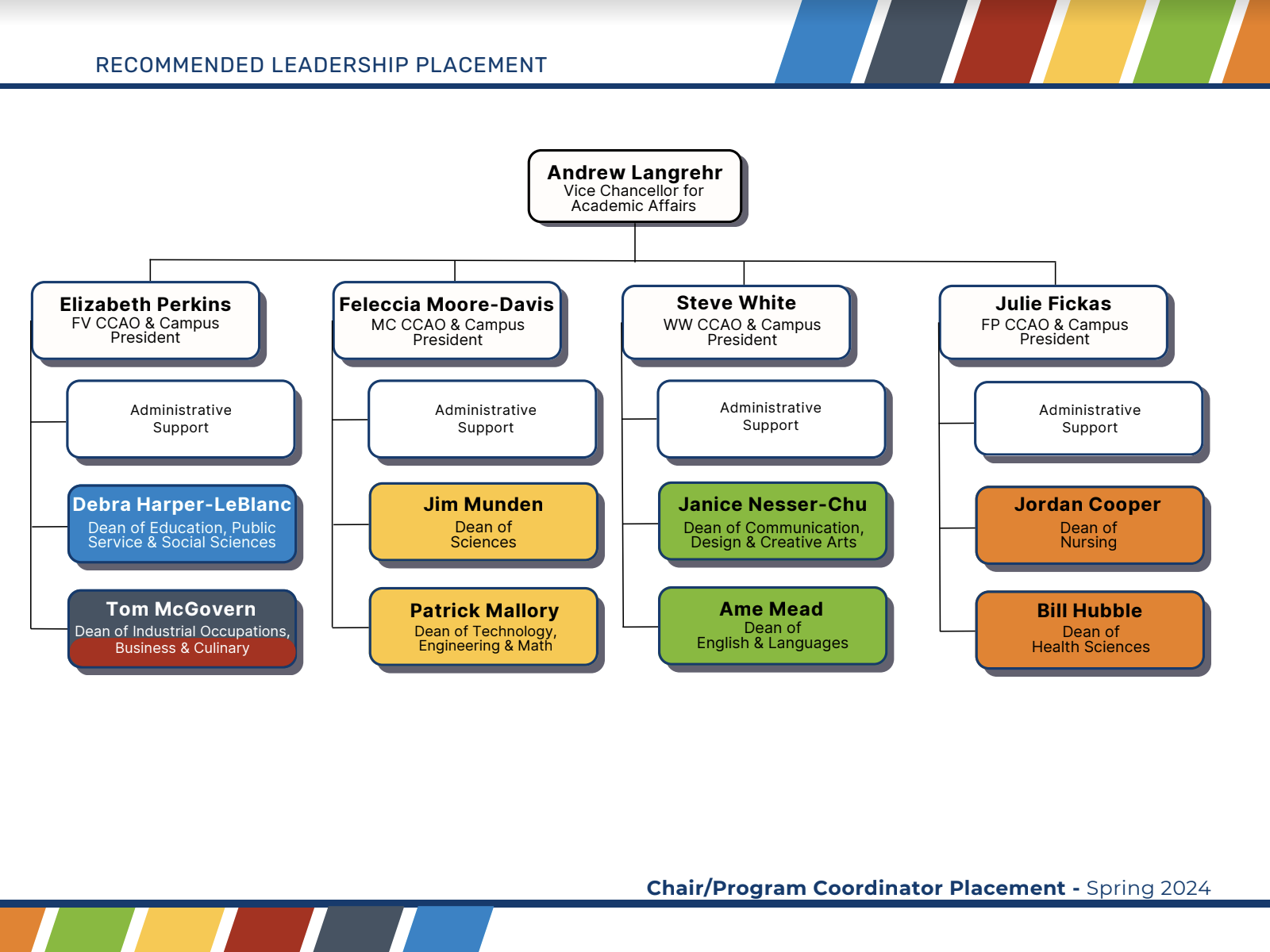Vice Chancellor Andrew Langrehr gives an update on where the timeline now sits
BY: JACOB POLITTE
Managing Editor
The college’s reorganization of Academic Affairs is moving along on schedule and is set to meet its tentative July 1 deadline, according to Vice Chancellor of Academic Affairs Andrew Langrehr.
“Yeah, I think we’re on time, [though] we’re still in process,” Langrehr said. “And we’re making good progress. Most recently, we’ve sent out some communication to let folks know where we see some gaps.”
Specifically, Langrehr mentioned that “We’re going to need to do some department share determinations or searches, and maybe some program leadership. And we’re doing an analysis right now of the support staff. And making sure that it makes sense. And we’re just finalizing the new dean job descriptions. So those recommendations about where the deans will be placed, we’ll be having those conversations and bringing that forward to the board in the next couple of weeks. So I think we’re doing pretty well.”
Langrehr said a lot of the behind the scenes work in this process, in terms of getting approval, has come from a cabinet level.
“The Board [Of Trustees], we update at their direction or the chancellor’s direction, but the structure underneath the chancellor is approved by you know, the chancellor and the cabinet,” he said. “And so when the structure was approved for the dean structure, that was done at a cabinet level. We’ve been working with the sort of the Pathways Dean’s structure, [and] we’ve made recommendations of our current deans in these new positions.”
“Those are recommendations right now,” he reiterated. “None of those Dean’s have sort of technically accepted those positions or been approved for those positions, but they kind of know where we’re planning for them to go.”
As a part of the reorganization, some instructors in certain departments may find their longtime dean displaced to another campus; concern over this issue was raised in a Meramec faculty forum this past September. Among other examples, in the latest tentative organizational charts, Dean Ame Mead is set to move to the Wildwood campus, leaving the English Department without a full time dean on-campus.
Langrehr doesn’t anticipate that issue being much of a problem, saying that some departments already have a situation like that in place, but that it might be an adjustment for some departments not used to that sort of system.
“We already have that situation in place now, he said. “We have nursing district wide, and the nursing team is at Forest Park, where its permanent location is. In fact, most of our career programs over the last five years have shifted to a district Dean structure, nursing is just the biggest and the longest. And so that won’t be new, but it will be new for [departments like] English.”
Langrehr continued, “So in terms of regular engagement, there will be times when that Dean will be on campus that wants to have face to face meetings. But some of that engagement will also occur through [Microsoft] Teams. I have all four of the campus presidents reporting to me, right? My office is at McKelvey. So I engage with them through Teams, but I also come to their campus.”
Langrehr said that there are other outlets that faculty can go to if they have an immediate concern.
“If there’s an emergent situation where a campus faculty leader […] has a need for a dean, you know, there’s something going on, they will be there,” Langrehr said. “There are deans in each location, and they’re CCA. There are presidents in each location that are administrators who can come in if there’s a need.”
Langrehr reiterated that faculty feedback was taken into consideration as the restructuring has continued. Reflecting on feedback received both during and after the campus forums in the fall, he mentioned how that feedback was integrated into the tentative mechanics of the new structure.
“The first draft structural document had a considerable number of pieces that came from forum comments,” he said. “And then that first iteration came with an opportunity to respond. And we changed things in that draft.”
Langrehr gave an example of one of those changes being the removal of a “lead chair” position.
“Out of the first conversation, we had the concept of a lead chair, so not just department chairs reporting to a dean, but one of those department chairs would be the lead chair for that area, who would be kind of the communication conduit to the dean. And then as we got more feedback on that, in the current draft, you don’t see that anymore. [And that’s] because people commented [among the lines of], ‘Why wouldn’t people have an equal ability as a department chair to communicate with the dean’ and ‘There’s no need for that extra release time’ and some of that feedback precipitated that shift.”
Langrehr again reiterated that the feedback received has been essential to the process.
“I think we’ve tried to hear people,” Langrehr said. “When we have taken that feedback, we’ve gone through every piece of it and identified where there’s an opportunity to value it. You know, sometimes the feedback was at odds, right? You had someone that says do X and someone that says do Y. So you’d look at that and analyze it. But I think that folks looking at the first iteration of this, to the to where we are now can see those changes. And those changes came from feedback on the drafts and that form information.”
Take a look at the updated organizational charts below:
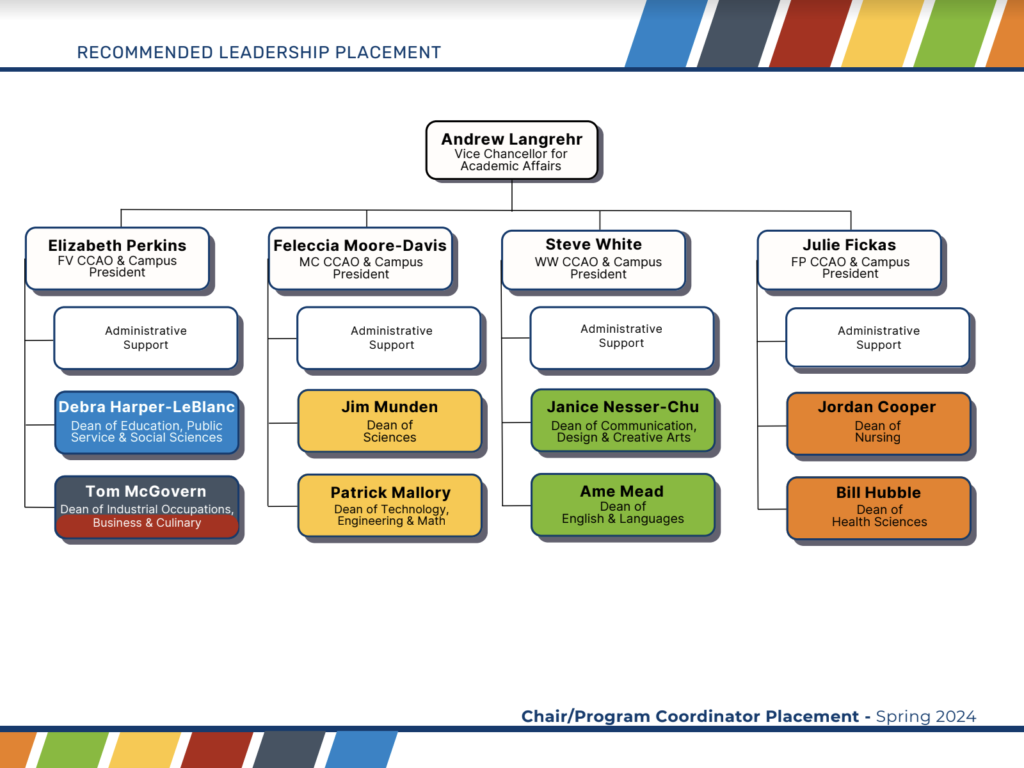
Florissant Valley Campus:
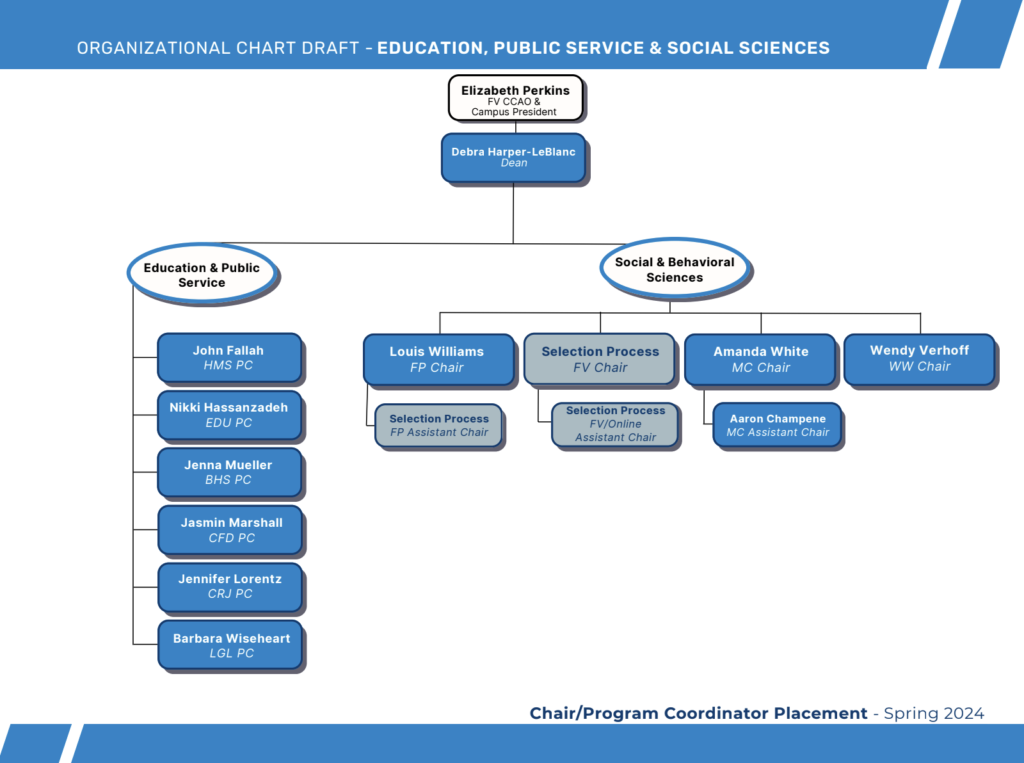
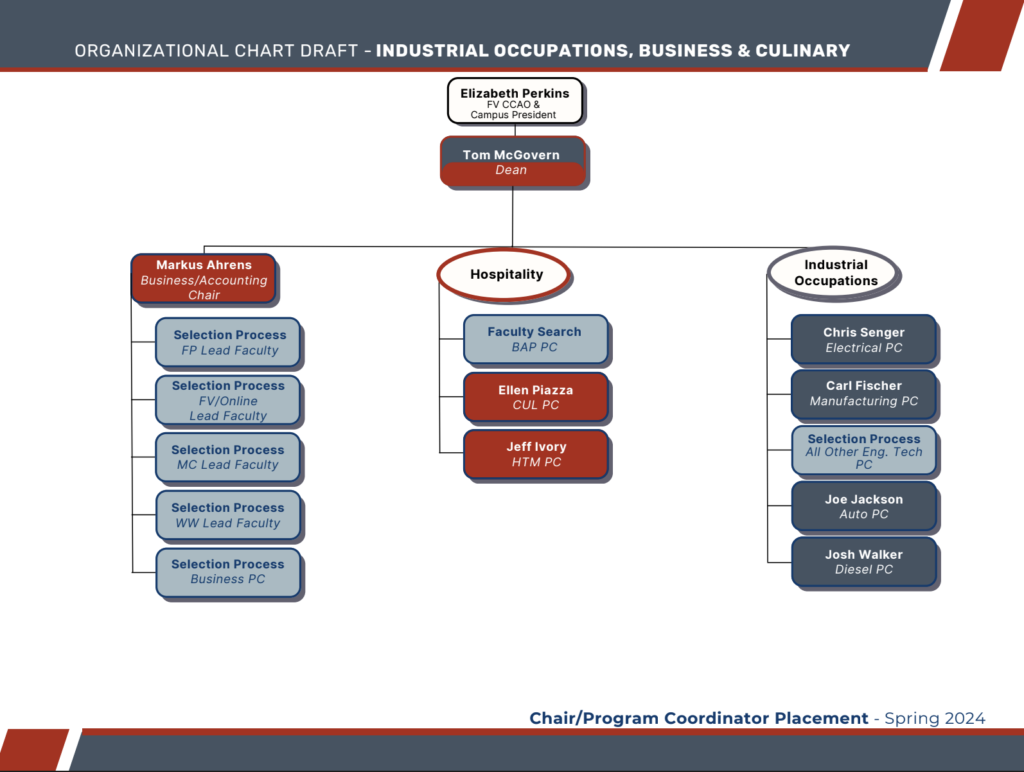
Forest Park Campus:
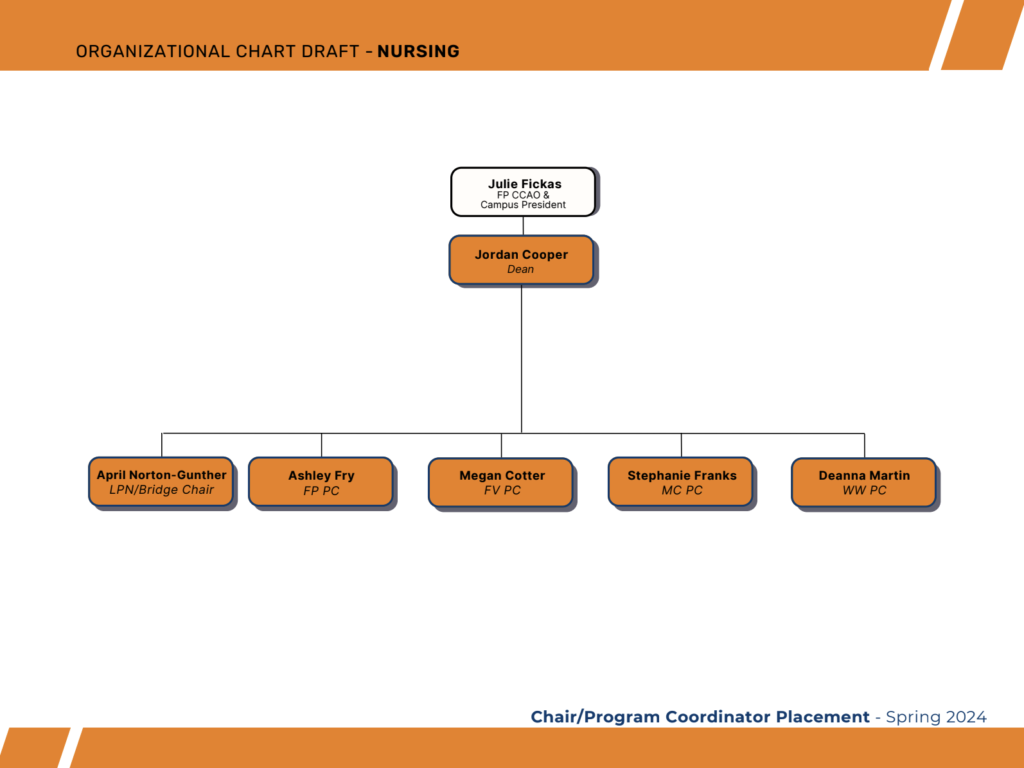
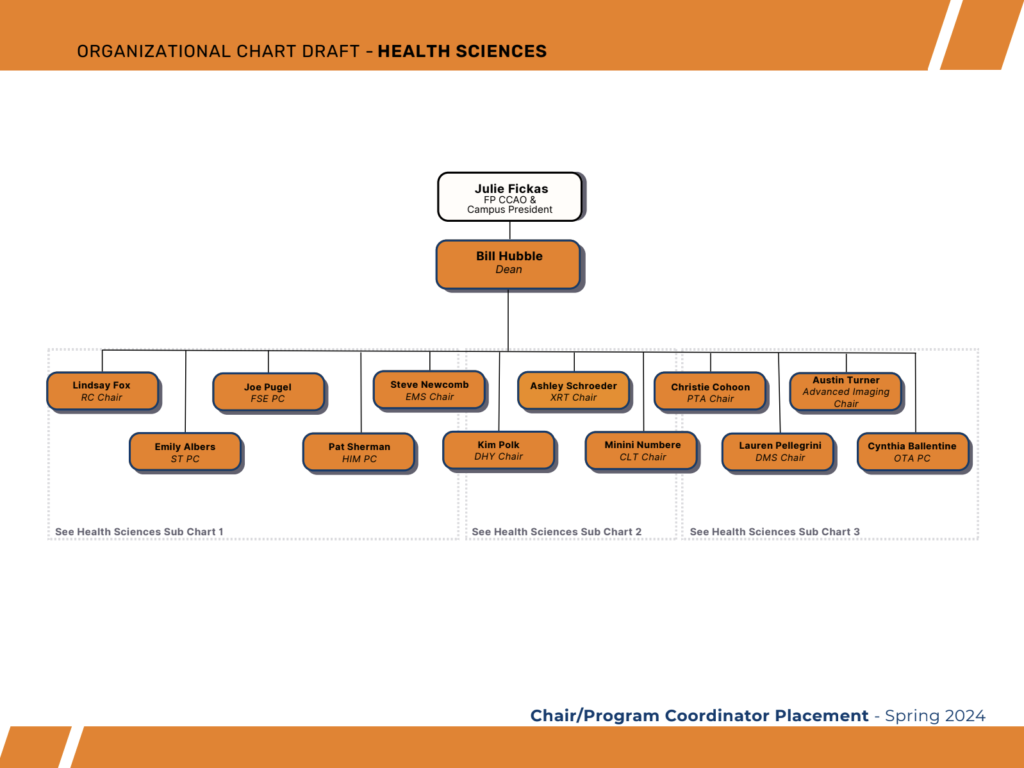
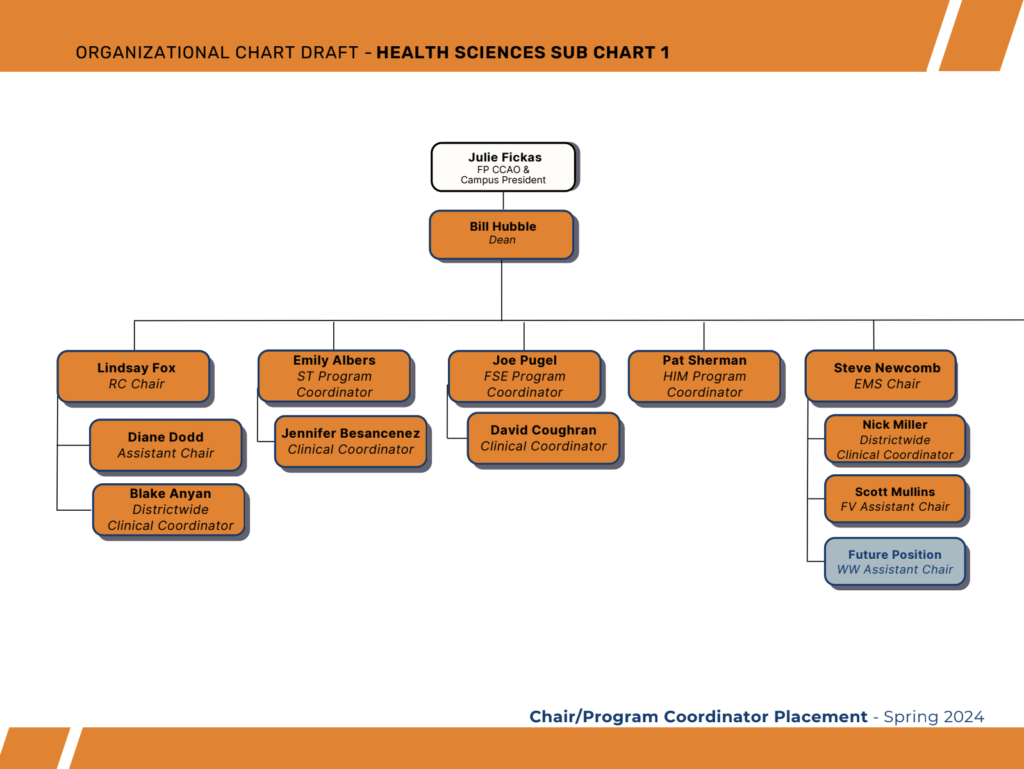
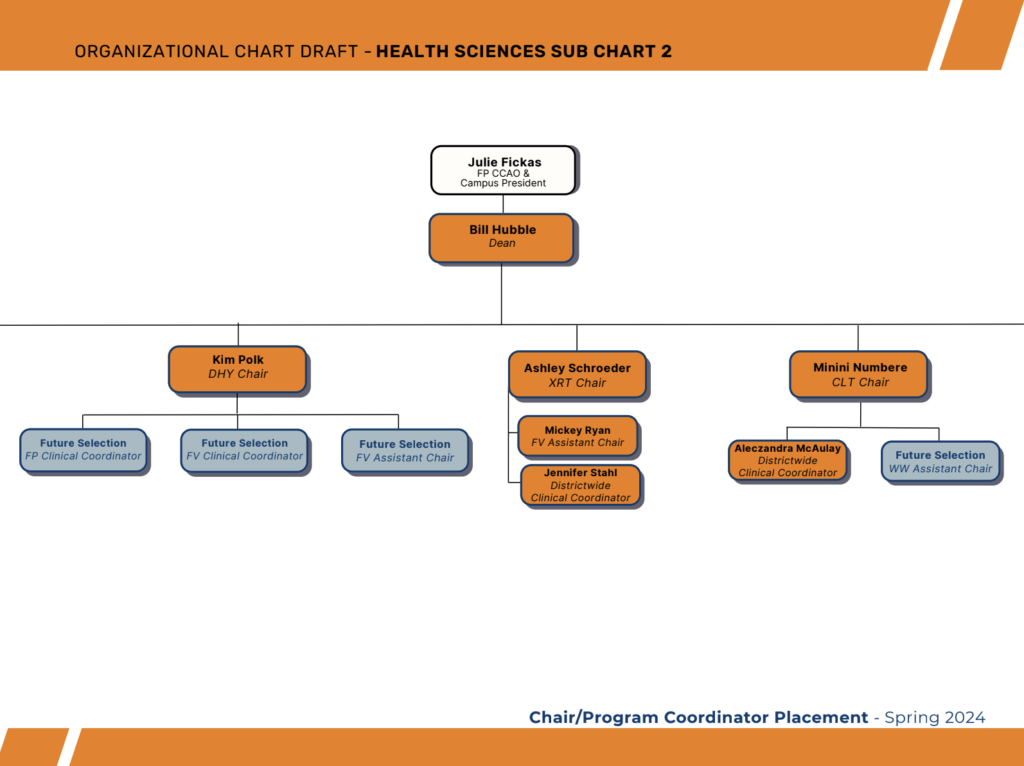
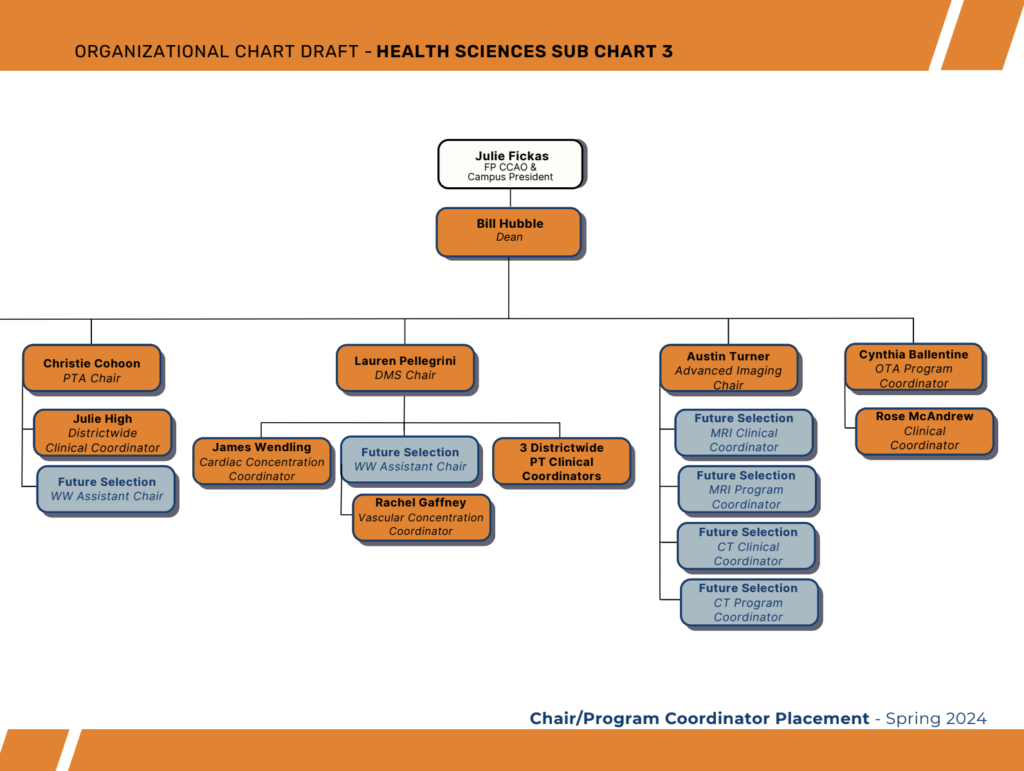
Meramec Campus:
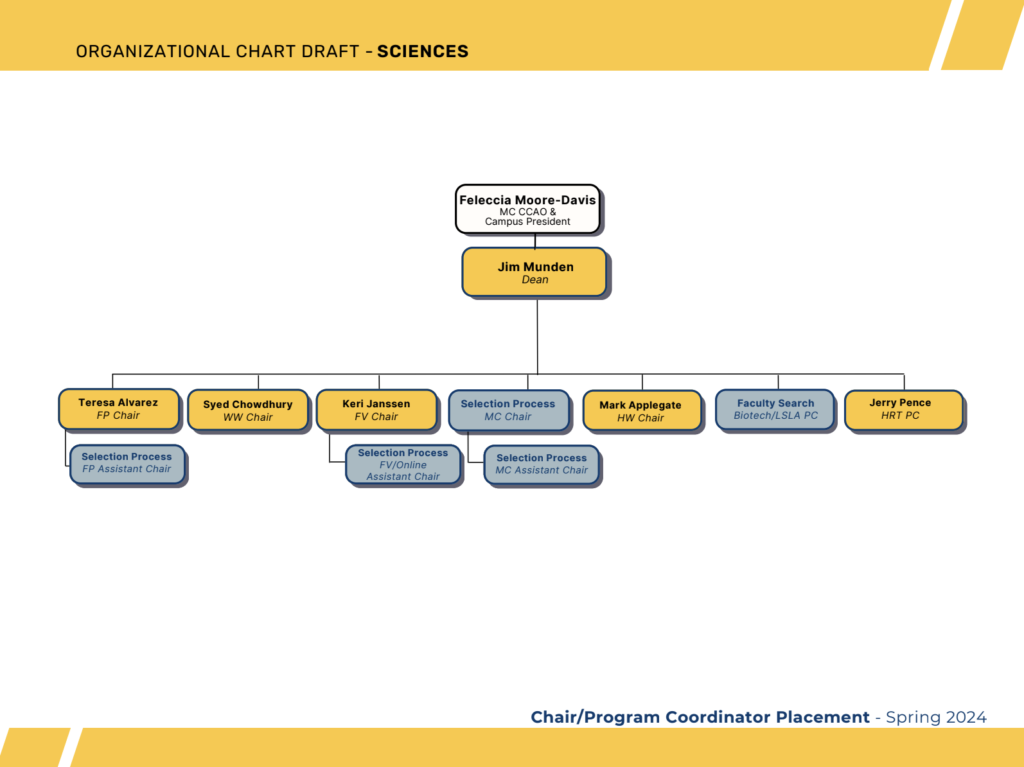
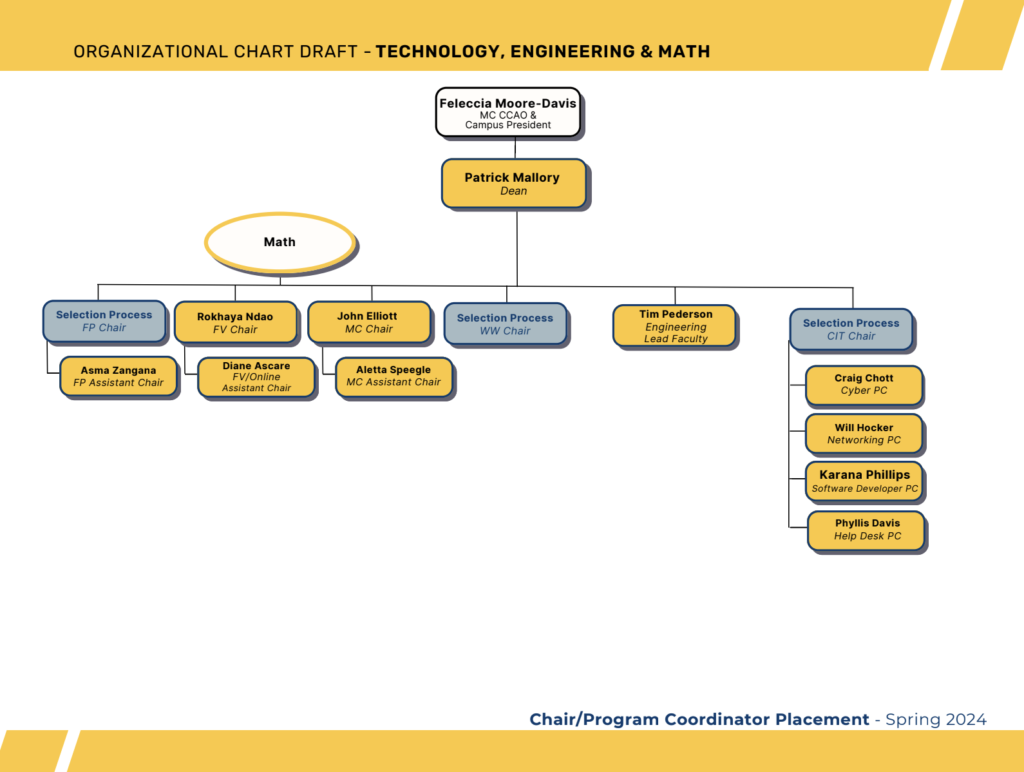
Wildwood Campus:
